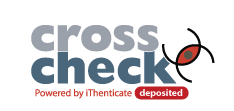MAGNITUDE AND DETERMINE OF THE RISK FACTORS AND INCIDENCE OF THE ARTERIAL ISCHEMIC STROKE AFFECTING THE CHILDREN OF THE ZAGAZIG CITY
DOI:
https://doi.org/10.48047/Keywords:
Arterial ischemic stroke ; Incidence ; PediatricsAbstract
Background: Childhood arterial ischemic stroke (AIS) differs in essential aspects from adult stroke.
Pediatricians, among others, struggle with a low awareness among laypersons and physicians, resulting
in delayed diagnosis, less experience in the use of thrombolysis and mechanical thrombectomy, and a
time-and resource-consuming etiological clarification due to the multitude of possible risk factors. The
aim of the present study was to investigate and determine the most common risk factors and causes of
AIS in children.
Patients and methods: This prospective cohort study was carried out, including 24 patients admitted
to Pediatric Department, Faculty of Medicine, Zagazig University. All patients were subjected to the
following full history taking, proper clinical and neurological examination, and routine blood tests. All
echocardiograms were reviewed by a pediatric cardiologist. Outcome of AIS treatment were followed
in all patients.
Results: The variability of focal manifestation among studied patients most frequent one was
hemiparesis (62.5%), followed by Speech disturbance41.7% then Facial weakness 33.3%; the least
manifestation was Ataxia (16.7%) among Arterial Ischemic Stroke group. Vascular imaging artropathy
subtype of AIS patients, nearly two fifths was arteropathy type,12.5%, Moyamoya, the same percent
was arterial dissection. About 37.5% of arterial ischemic stroke patients were treated via anticoagulant,
29.2% by antiplatelet and one third of them was treated with both. Early outcome of treatment arterial
ischemic stroke patients, 37.5% of them became normal. At late follow up period about 50% of patients
became normal.
Conclusion: Our findings suggest that the most frequent risk factor for arterial ischemic stroke was
cardiac lesion (41.7%), followed by arterioropathy (37.5%), then prothrombin disorder 29.2%; the least
recorded risk factor was diabetes (4.2%). When stroke or transient ischemic attack occurs, a
comprehensive survey should be performed and detailed history about the associated underlying
diseases should be noted.











